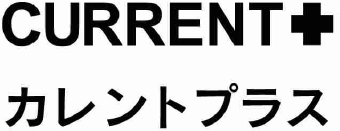2020.12.24
Appeal decision report – “CURRENT+” and “CURRENT+ (written in Katakana)” was allowed to be registered because the trademark and cited trademarks “current” and “CURRENT” are dissimilar
December 24, 2020
Noriko Yashiro
| Appeal number | Rejection 2020-8208 (JP Appl. No. 2019-110877) |
|---|---|
| Case summary | |
| Date of decision | November 11, 2020 |
| Demandant (Applicant) | iSense,.co.ltd |
| Trademark(s) |
Applied-for-trademark Cited trademark 1 Cited trademark 2 |
| Designated Goods/Services and Class(es) |
Designated Goods/Services and Class of applied-for-trademark: Retail services or wholesale services for cosmetics; and others in class 35 |
| Judgement |
The applied-for-trademark consists of the letters “CURRENT” and a “black cross shape” in the upper portion and “Katakana corresponding to transliteration of CURRENT+” in the lower portion. “CURRENT” has a meaning of “flow” and has a pronunciation of “CURRENT”. Thus, it is easily recognized that Katakana portion corresponding to the transliteration of “CURRENT” specifies the pronunciation of “CURRENT” in the upper portion. With the above in mind, it is reasonable to say that the “black cross shape” indicates the “+ (plus sign)”, pronounced as “plus”, although the “black cross shape” is slightly bolded. The appeal examiners did not find that only the portions “CURRENT” and “Katakana corresponding to CURRENT” of the applied-for-trademark give a strong and dominant impression as a source-distinguishing mark to traders and consumers and that the portions “black cross shape” and “Katakana corresponding to plus” are unable to serve a source-distinguishing mark in connection with the designated services. Under the circumstances, it is reasonable to say that the applied-for-trademark is pronounced only as “CURRENT PLUS” as a whole because the lower portion specifies the pronunciation of the upper portion and because the applied-for-trademark is cohesive in appearance and because the pronunciation is not so redundant. Further, the Katakana portion corresponding to transliteration of “CURRENT+” is not a word listed in dictionaries and the like. In addition, Katakana portion is not known as a word having a specific meaning and the upper portion is not known for showing a specific thing. Thus, the applied-for-trademark cannot be recognized as having a specific concept as a whole. It is reasonable to say that the applied-for-trademark is recognized as a coined word as a whole. It is unreasonable to say that the portions “CURRENT” and “Katakana corresponding to CURRENT” are extracted by traders and consumers in trading. Thus, the refusal decision in the examination stage should be withdrawn because the decision concluded that the applied-for-trademark and the cited trademarks are similar by extracting the portions “CURRENT” and “Katakana corresponding to CURRENT” of the applied-for-trademark and comparing similarities of the trademarks. |
| Comments |
The applicant argued that the applied-for-trademark and the cited trademarks are dissimilar by referring to the following earlier appeal decisions and others, although the argument failed in examination stage: – Applied-for-trademark – Applied-for-trademark “PORTRAIT+” and cited trademark “PORTRAIT” are not similar in sound. The applied-for-trademark is allowed to be registered. |
